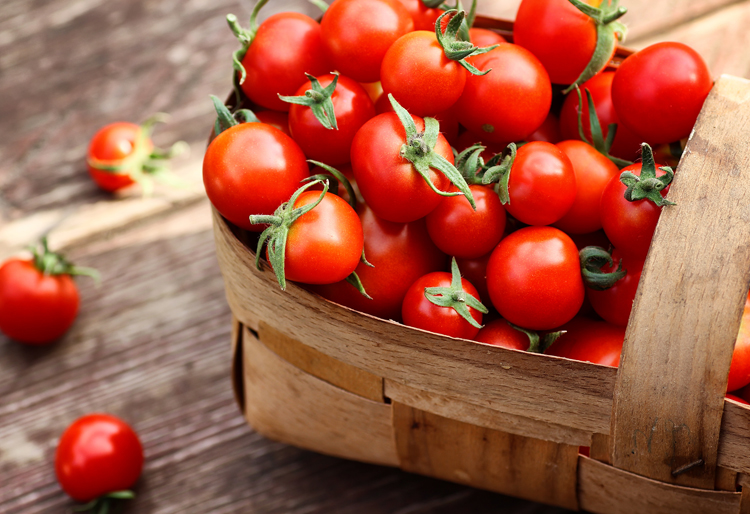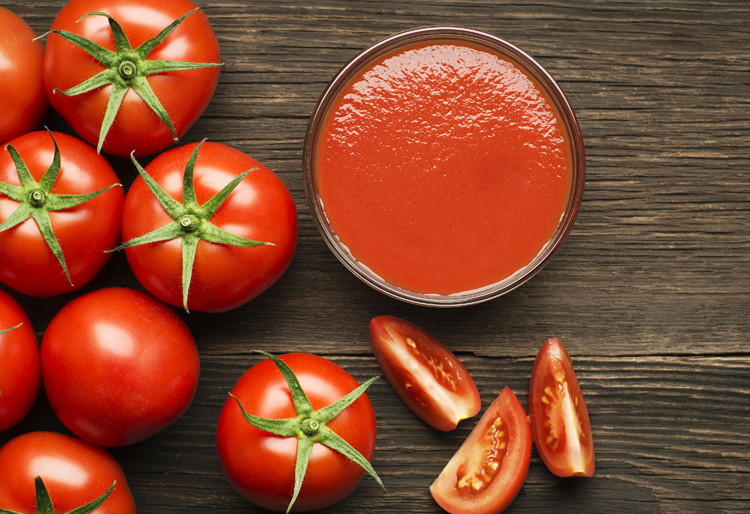Is tomato a fruit or vegetable?
The tomato is one of the most popular and consumed vegetable products in the Mediterranean diet. Its colorful protagonist is associated with summer, refreshing gazpachos, salads and as a base for all kinds of toasts. So why do we ask if it is a fruit?
fresh food
Share

Is tomato a fruit or a vegetable? This is a question that we have all come to ask ourselves from time to time. And it is that, for most of the population, the tomato is not a fruit but a vegetable, and as such it is identified in the sections of the commercial surfaces. However, this is just a point of view, the culinary one, since, from the botanical point of view, the tomato is not a vegetable, it is a fruit. Next, we tell you the origin and the reason for this question.
Origin of the tomato
The fruits of the tomato plant belong to the Solanaceae, a family of herbaceous plants that has approximately 98 genera and some 2,700 species, but… Be careful! Solanaceae, in addition to the delicious tomatoes, have several toxic species such as, for example, the mandrake. Within this large herbaceous family, the tomato is called Solanum lycopersicum. Its origin dates back to South America and its use as food was given for the first time, 2500 years ago, in Mexico. There, the indigenous people called it tomatl, and later, tomato. With the discovery of America, the tomato crossed the Atlantic and reached our kitchen recipe books, along with other essential products in the Mediterranean diet, such as potatoes, zucchini and corn.
The tomato, fruit or vegetable?
The question of whether tomato is a vegetable fruit is well known. This old debate originated for a simple reason: because the food and botanical definitions do not always coincide. Next, we tell you why.
Tomatoes are fruits for scientists
For scientists, the tomato is a fruit because it uses the botanical classification, that is, it focuses on the physiological characteristics of the plant. And it is that, according to the scientific definition, a fruit would have at least one seed and would grow from the flower of the plant. Based on this, tomatoes are classified as fruits because they contain small seeds in the middle and grow from the flower of the tomato plant. This explanation also applies to other foods such as zucchini, peppers or pumpkin.
Tomatoes are vegetables for culinary
For the food sector, the tomato is a vegetable and disagrees with the consideration of the tomato as a fruit because they look at the culinary classification system, which differentiates fruits and vegetables based on their use and flavor. For this reason, the guidelines for its classification place the tomato within the category of vegetables, greens and vegetables. This is due to two reasons:
- Culinary tradition: according to the definition of “fruit” in some general dictionaries, the tomato cannot be called a fruit, since this word restricts the concept of fruit to “an edible fruit, sweet or very sweet, obtained from cultivated or wild plants”. And it is that, although the tomato is edible, it does not have a sweet or very sweet taste. The same goes for avocados.
- Historical fact: in the 19th century, a ruling by the Supreme Court of the United States ruled emphatically that the tomato was a vegetable. Are you interested in knowing more about this historical fact? Next, we expand the information.
Tomato as a vegetable or fruit? This is how the debate started
The question of whether the tomato is a vegetable fruit began much longer than you can imagine. And it is that, in the year 1886 a ship with a large cargo of imported tomatoes docked in the port of New York. A law had recently been passed imposing taxes on imported vegetables, but this tariff did not apply to fruits.
The companies that worked with tomatoes defended that they were exempt from paying the tax, since the tomato was a fruit. To argue it, they went to biologists and encyclopedias that showed that the tomato was indeed classified as a fruit. The government, for its part, argued that this product was not consumed as a dessert, since it was an ingredient served in salads, sauces or as a garnish, therefore, it was a vegetable and the importers had no choice but to meet the obligations tax. Interesting, right?

Properties and benefits of tomato
Raff, Kumato, Cheery, Valenciano… There are so many varieties of tomato! And it is not for less, since the tomato is a fundamental part of Mediterranean cuisine, because in addition to enriching many recipes and being the fundamental base of stir-fries and salads, it has multiple properties and benefits for our health, take note of them!
- Helps care for eyesight: this is due to its contribution in vitamin A. On the other hand, tomatoes also play an important role during pregnancy and lactation.
- It is a great antioxidant: it is rich in lycopene and carotenoids, some of the most powerful natural antioxidants. Thanks to this, the tomato is a great ally against skin aging.
- Improves circulation: Tomatoes contain iron, a very healthy mineral for the good condition of the blood, as well as vitamin K that helps control coagulation. In this way the tomato helps prevent cardiovascular diseases.
- Prevents constipation and fluid retention: Its fiber content that takes care of intestinal transit and prevents the appearance of diseases that have to do with the gastrointestinal organs. The tomato contains potassium and low levels of sodium, which helps to avoid fluid retention and the elimination of toxins.
- It has a low caloric intake: the tomato contains very few calories, 22 kcal per 100 g, since it is almost all water, which is why it is an essential food during the summer months.
Recipes with tomato
The tomato offers a wide range of culinary possibilities. Raw or fried, the tomato can be used in many recipes, as well as in salads, gazpachos, juices, stir-fries, etc. Next, we offer you 5 recipes with tomato as the main ingredient.






